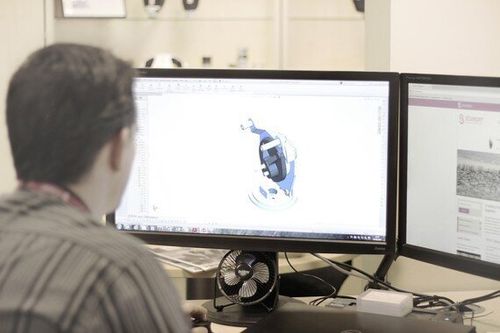

Image credit: Steeper
The UK's increasingly diverse range of design skills and specialisms are thriving with new technologies flooding the global market, but with new designs more abundant than ever before, it is important to ascertain how the design team can stay relevant yet enable growth with the creation of new products and devices.
As a designer, the necessity to develop new products and devices that understand the customer's needs and requirements is one of the most important aspects of the job. Most designers, by nature, are problem solvers and the challenge of finding the right answer is in itself, one of the most exciting parts of the journey. However, whilst most designers have an abundance of new ideas, it is usually the constraints of the company that specify the direct application and use within a given industry. Comparatively, over the last few years, trends have seen the influx of design-led companies exploring new markets, helping to capitalise on growth and strengthen their market position.
As a design-led company, Steeper invest heavily in design and as such have developed some of the best prosthetic hands on the market. As the industry has grown and with Steeper's experience the opportunity to explore new, previously untapped sectors such as assistive technology led to the company, designing, researching and developing a new range of assistive technology devices.
By nature, design skills are impermanent and through having designers and engineers that have worked on pioneering prosthetic devices, they are then able to apply the same theories and principles to assistive technology devices. However, there are a few things to consider when tackling a design project that is outside of your native market:
Understand your market - this may sound obvious, but there is nothing more important than understanding what makes the mind of your target consumer tick. The easiest way to do this is to have as much contact with end users and those with connections to the product or problem that you are designing for.
Gather feedback at every stage - it is important to gather feedback at every stage and reflect on the needs of the end user regularly, this will help save time in the long run, as simple problems can be identified early on. As the design process enters through the various stages, the feedback will help tailor the initial specification.
Base it on the maths - there will be pitfalls along the way, but if you are struggling with getting the design breakthrough that you need, then go back to the maths. You won't get a breakthrough from running calculations, but it can help focus the design in the best direction. You can have a number of great ideas, for example, using a kinetic system from a wrist watch to power a prosthetic device, but some quick calculations can tell you the power delivered is 0.1% of the power required. This stops the team from accepting ideas and gives opportunity to challenge everything, the best environment for design is an innovative design team.
These three strategies will help in the application of design-led thinking, planning and overcoming the pitfalls of any new design project. However, it is always important to remember that through effective design, the opportunities for growth can make the difference between a company capitalising on new markets, understanding the needs of consumers and helping deliver additional value. Hence, why the role of the design team is a vital ingredient to any business.